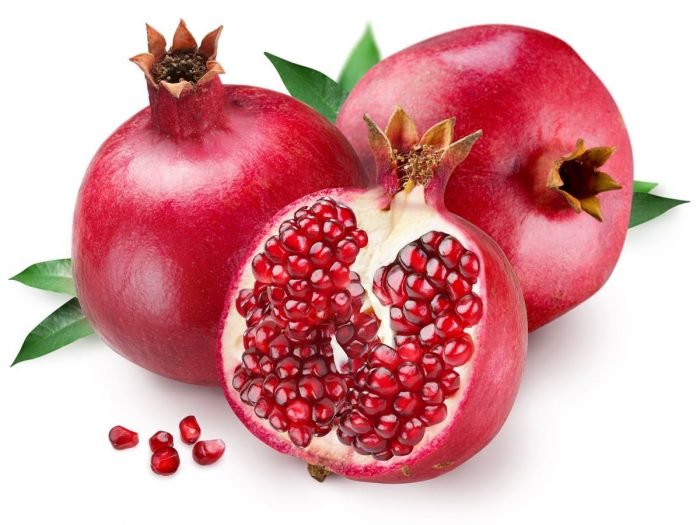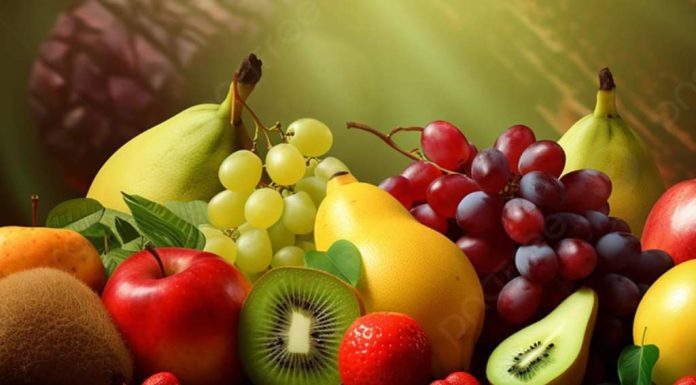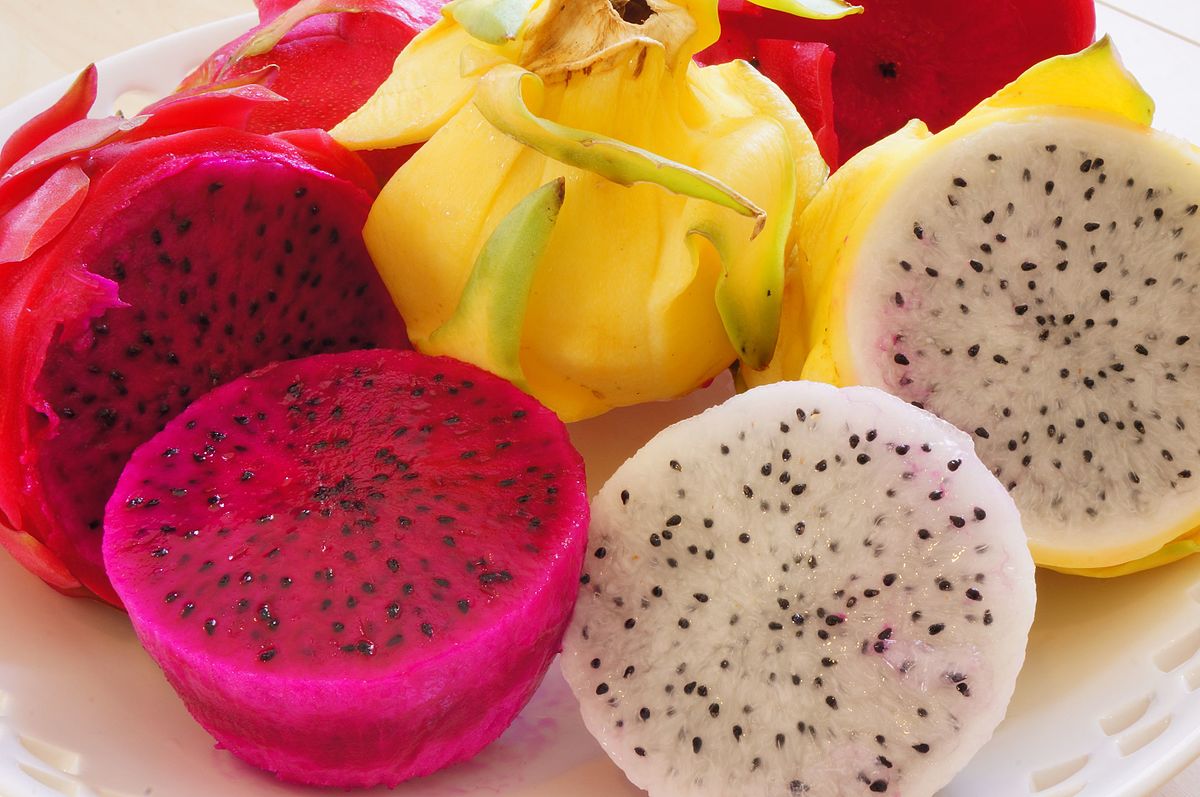Many people do not know about Sauerkraut and its Benefits. A genius must have thought of this wonderful way of preserving the goodness of cabbage for months on end. In traditional European sauerkraut, raw cabbage is finely shredded and layered in a stone crock, with sea salt and spices such as juniper berries; each layer is pressed firmly down.
By...
Well everyone must have some knowledge about Pomegranates. Which is a thick-skinned super seedy fruit, with a dazzling red hue which is now touted as a sensational fruit by scientific researchers? The beverage carries only the goodness of the fruit and doesn't have any preservatives or added colors.
The mouth-watering pomegranate red pearls can be squashed to make a...
The creamy, crispy, and crunchy cashew nuts are cherished for their succulent flavor. They are eaten as a snack, whether roasted, salted, sugared, or covered in chocolate, and are often used as a flavorful complement to appetizers, main dishes, and desserts. Slightly sweet in taste they are relished as the garnish in sweets and desserts. Along with almonds, they...
Cucumbers have come a long way. If you grew them twenty years ago and gave them because you got a lot of scabby, pulpy, disease-ridden fruits. Or the fruit never set, or they turned out great but gave you indigestion, try again? But these days there are several good disease-resistant varieties. The seedless ones, less bitter ones, even burpless...
Lucuma is pronounced (loo-koo-mah) and is also known as the “Gold of the Incas” and is so common in Peru. This fruit is mostly used in ice cream flavors and even trumping vanilla and chocolate. Lucuma (Pouteria Lucuma) is a super healthy fruit that has been eaten by Peruvians since 200 A.D.
But modern science is just now getting...
Pulp: What to do with it
Here are some of the additional benefits of the juicing revolution - all the things you can do with the pulp of your juiced fruits and vegetables. Despite knowing how many things you could do with leftover pulp; I feel guilty about not using it all! Putting together this section of the best uses...
The Black Sapote “Diospyros nigra” is a species of persimmon in the family Ebenaceae. It is also called “chocolate pudding fruit” and black snap apple. Black Sapote is a tropical fruit mostly grown in Mexico, Central America, The Caribbean, and Colombia. Sapote means soft edible fruit and has no relation with white sapote or mamey sapote. The tree can...
Description
Do you know, what is the Difference Between Turnips and Rutabagas? There is nothing in the garden quite as unromantic as a turnip unless perhaps it’s rutabaga. It is strongly flavored and good at storing root vegetables; they are rarely invited to sit at formal tables. But they are good earthy peasant food. Most people insist on a bowl...
There are numerous health juicing benefits. How was it when I discovered juicing that I was floating from excitement? Despite being so natural, it was so drastically different from everything we knew about That made perfect sense, and I couldn't believe I had been able to access it all these years. Why didn't I learn about this sooner? What...
Apples are a potent source of antioxidants with polyphenols, flavonoids, and vitamin C. Therefore Apples are a good source of fiber, and potassium and there are only 47 calories in an average-sized apple.
The undisclosed secret behind the antioxidant capacity of the apple is in its skin. The apple skin alone gives 2 to 6 times the antioxidant activity...
The best reason to grow beets is to make homemade borscht. But you can also boil them and serve them with butter or one of those gooey sauces, you can pickle them, or you can eat the green tops in salads or as cooked vegetables. Beets can be savored from the first tops in spring to the last dug roots...
Papaya Shrinks Prostate Cancer Risk by 63 percent and that’s the benefit seen by men in this study. When they ate 390 grams of papaya per week that’s half a large papaya and carries just 200 calories. How does papaya provide such health benefits? It is an extremely rich source of the three anti-cancer super nutrients beta-carotene, lycopene, and...
There are so many Health Benefits of Apricot. It is naturally beautifully orange-colored fruits full of beta-carotene and fiber that are one of the first signs of summer. Apricots are grown in many countries of the world, but they’re most popular in countries of North America, South America, and New Zealand. However, dried and canned apricots are available year-round,...
The mysterious and rarely seen Butcher's Broom, or (Ruscus aculeatus), is a low-growing permanent shrub. It has hard, erect stems and very rigid leaves that lay off on a sharp spine. Thus, from the center of the leaves grow small greenish-white flowers. The flowers flourish in early spring and grow into red berries in autumn.
The small red berries...
Blueberry is a wonderful plant. Not only do they live for decades and bear delicious fruits that need almost no care. But they also are beautiful in themselves, with white, bell-like flowers in spring and handsome oval leaves that turn orange-scarlet in fall.
The berries are pretty, ripening slowly so that clusters are green, red, and blue all at once....
Why are tomatoes so healthy?
Our modern tomatoes are all descendants of wild cherry tomatoes that grew along South America's western coast. From Mexico, the Spanish introduced the fleshy tomato to Europe during the 16th century. It is believed that the Mexicans were the first to cultivate the tomato.
It was only a matter of time before the tomato became popular...
How to Grow Pears?
Pears grow on sturdy, deep-rooted trees that can live and bear for as long as seventy-five years. They will take less cold than apples but more than peaches, and often have fewer pest and disease problems than either. They are not especially rich in vitamins, but no matter. Get your vitamins A and C from the...
There are numerous health benefits of Papaya. This is a fruit that can be cooked, eaten raw, or used in recipes to provide flavor. The papaya is a tropical fruit and originated from Central America. It has been planted all around the world and is consumed by many people regardless of their culture and location. Papayas are also called...
Top 13 Strange Fruits in the World
Some fruits are so amazing and delicious to eat. Rare fruits refer to fruits that are not commonly grown or consumed. These fruits may be difficult to find in grocery stores or supermarkets and may have a limited growing range or a short season.
These are just a few examples of rare fruits,...
Well, crops in Succession Planting is a good way to make the most of your precious garden space. Sometimes it means planting several successions of the same crop. However, in the small plan, there is a spring carrot crop planted together with radishes to shade the carrot seedlings, then a summer carrot crop planted in another spot to mature...
Brief Description
The health benefits of eating figs have been a prized delicacy for at least 5,000 years. They were grown in King Nebuchadnezzar's famous Hanging Gardens of Babylon. The fig's benefits are mentioned frequently throughout the Bible. It was exported by the ancient seafaring Greeks and Phoenicians, who may have introduced it to Italy.
In the 18th century, priests...
Description
Jack fruit is well believed to have originated in the mountainous region of the Western Ghats of the Indian peninsula. It is supposed to have spread from India to other tropical countries such as Malaysia, Burma, Sri Lanka, Indonesia, Brazil, Jamaica, etc.
Jack fruit (Artocarpus heterophyllus) is one of the most important underutilized fruit belonging to the family “Moraceae” and...
Pyracantha is the scientific name for firethorn plants, an evergreen plant that is easy to grow and provides seasonal interest and berries can handle the simple care of firethorn bush. Pyracantha is a genus of large, thorny evergreen shrubs in the family Rosaceae, with common names firethorn or pyracantha are native to an area extending from Southwest Europe east...
Garlic: Food and Medicine
Both ancient history and a wealth of contemporary research support the use of garlic. More than 3,000 scientific papers cover its chemistry, pharmacology, and clinical uses. The therapeutic uses of garlic are extensive. But those specific to the cardiovascular system include reducing elevated cholesterol, preventing atherosclerosis and hypertension, treating poor circulation to the legs, and improving...
Parsnip takes some patience. The seeds are slow sprouting, the plants are slow-growing, and the whole crop can take a good year to produce if you do it right. But they’re easy, pest-free, and well worth the wait. They look like white carrots but are fatter on top and skinnier on the bottom.
The Parsnip's texture is somewhat potato-like,...































